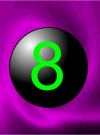Cowslip
The tiny people were then supposed to be fond of nestling in the drooping bells of Cowslips, and hence the flowers were called fairy cups; and, in accordance with the doctrine of signatures, they were thought effective for removing freckles from the face.
Added Jul 3, 2010
| 9,209 Reads
Our English pastures and meadows, especially where the soil is of blue lias clay, become brilliantly gay, "with gaudy cowslips drest," quite early in the spring. But it is a mistake to suppose that these flowers are a favourite food with cows, who, in fact, never eat them if they can help it. The name Cowslip is really derived, says Dr. Prior, from the Flemish words, kous loppe, meaning "hose flap," a humble part of woollen nether garments. But Skeat thinks it arose from the fact that the plant was supposed to spring up where a patch of cow dung had fallen. Originally, the Mullein—which has large, oval, woolly leaves— and the Cowslip were included under one common Latin name, Verbascum; for which reason the attributes of the Mullein still remain accredited by mistake to the second plant. Former medical writers called the Cowslip herba paralysis, or, "palsywort," because of its supposed efficacy in relieving paralysis. The whole plant is known to be gently narcotic and somniferous. Pope praised the herb and its flowers on account of their sedative qualities:— "For want of rest, Whilst Coleridge makes his Christabel declare with reference to the fragrant brew concocted from its petals, with lemons and sugar:— "It is a wine of virtuous powers, Physicians for the last two centuries have used the powdered roots of the Cowslip (and the Primrose) for wakefulness, hysterical attacks, and muscular rheumatism; and the cowslip root was named of old both radix paralyseos, and radix arthritica. This root, and the flowers, have an odour of anise, which is due to their containing some volatile oil identical with mannite. Their more acrid principle is "saponin." Hill tells us that when boiled in ale, the roots are taken by country persons for giddiness, with no little success. "They be likewise in great request among those that use to hunt after goats and roebucks on high mountains, for the strengthening of the head when they pass by fearful precipices and steep places, in following their game, so that giddiness and swimming of the brain may not seize upon them." The dose of the dried and powdered flowers is from fifteen to twenty grains. A syrup of a fine yellow colour may also be made from the petals, which answers the same purposes. Three pounds of the fresh blossoms should be infused in five pints of boiling water, and then simmered down to a proper consistence with sugar. Herbals of the Elizabethan date, say that an ointment made from cowslip flowers "taketh away the spots and wrinkles of the skin, and doth add beauty exceedingly, as divers ladies, gentlewomen, and she citizens—whether wives or widows—know well enough." The tiny people were then supposed to be fond of nestling in the drooping bells of Cowslips, and hence the flowers were called fairy cups; and, in accordance with the doctrine of signatures, they were thought effective for removing freckles from the face. "In their gold coats spots you see, The cluster of blossoms on a single stalk sometimes bears the name of "lady's keys" or "St. Peter's wort," either because it resembles a bunch of keys as St. [126] Peter's badge, or because as primula veris it unlocks the treasures of spring. Cowslip flowers are frequently done up by playful children into balls, which they call tisty tosty, or simply a tosty. For this purpose the umbels of blossoms fully blown are strung closely together, and tied into a firm ball. The leaves were at one time eaten in salad, and mixed with other herbs to stuff meat, whilst the flowers were made into a delicate conserve. Yorkshire people call this plant the Cowstripling; and in Devonshire, where it is scarcely to be found, because of the red marl, it has come about that the foxglove goes by the name of Cowslip. Again, in some provincial districts, the Cowslip is known as Petty Mullein, and in others as Paigle (Palsywort). The old English proverb, "As blake as a paigle," means, "As yellow as a cowslip." One word may be said here in medicinal favour of the poor cow, whose association with the flower now under discussion has been so unceremoniously disproved. The breath and smell of this sweet-odoured animal are thought in Flintshire to be good against consumption. Henderson tells of a blacksmith's apprentice who was restored to health when far advanced in a decline, by taking the milk of cows fed in a kirkyard. In the south of Hampshire, a useful plaster of fresh cow-dung is applied to open wounds. And even in its evolutionary development, the homely animal reads us a lesson; for Dat Deus immiti cornua curta bovi, says the Latin proverb—"Savage cattle have only short horns." So was it in "the House that Jack built," where the fretful creature that tossed the dog had but one horn, and this grew crumpled.
Added Jul 3, 2010
| 9,209 Reads
Share The Magic ...
The GoE MONEY!!! Course - A Course In Real MONEY MAGIC!
|





















